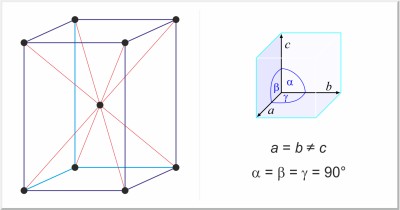Pa
Protactinium
PROTACTINIUM
TRANSITION ELEMENT: ACTINIDE
| Atomic number: | 91 |
| Group numbers: | 3 |
| Period: | 7 |
| Electronic configuration: | [Rn] 5f2 6d1 7s2 |
| Formal oxidation number: | +4 +5 |
| Electronegativities: | 1.5 |
| Atomic radius / pm: | 156.1 |
| Relative atomic mass: | 231.035 88(2) |
Protactinium was discovered by Kasimir Fajans and Otto H. Göhring (DE) in 1913. The origin of the name comes from the Greek word protos meaning first. It is a very rare, silvery-white, extremely radioactive metal that resists alkalis, reacts with oxygen, acids and steam. Protactinium is highly radiotoxic, extremely toxic and must be handled with great care. Protactinium does not occur in nature. It is found among fission products of uranium, thorium and plutonium.
| Density / g dm-3: | 15370 | (calc.) |
| Molar volume / cm3mol-1: | 15.03 | (calc.) |
| Electrical resistivity / µΩcm: | 19.1 | (20 °C) |
| Thermal conductivity / W m-1K-1: | 47 |
| Melting point / °C: | 1572 |
| Boiling point / °C: | - |
| Heat of fusion / kJ mol-1: | 16.7 |
| Heat of vaporization / kJ mol-1: | 481 |
| Heat of atomization / kJ mol-1: | 607 |
| First ionization energy / kJ mol-1: | 568.30 |
| Second ionization energy / kJ mol-1: | - |
| Third ionization energy / kJ mol-1: | - |
| in the atmosphere / ppm: | - |
| in the Earth's crust / ppm: | 2E-12 |
| in the oceans / ppm: | - |
| Crystal structure: | body-centered tetragonal |
| Unit-cell dimensions / pm: | a=393.2, c=323.8 |
| Space group: | I4/mmm |

| Isotope | Relative atomic mass | Mass percent (%) |
|---|---|---|
| 231Pa | 231.035 88(2) | * |
| 233Pa | 233.040 25(2) | * |
| Balanced half-reaction | Eo / V | |
|---|---|---|
| 90 Thorium | ← | 91 Protactinium | → | 92 Uranium |
Citing this page:
Generalic, Eni. "Protactinium." EniG. Periodic Table of the Elements. KTF-Split, 18 Jan. 2024. Web. {Date of access}. <https://www.periodni.com/pa.html>.
Articles and tables
- Periodic table
- Online calculators
- Scientific calculator for chemists
- Gas laws calculator
- Molar mass calculator
- Angle converter
- Roman numerals converter
- Number systems converter
- Preparation of solutions
- Labeling of chemical containers
- Oxidation numbers calculator
- ARS method
- Oxidation number change method
- Ion-electron method
- Gauss elimination method
- Memory game
- Find the pairs
- Articles and tables
- Chemistry
- List of abbreviations and acronyms
- Crystal systems and Bravais lattices
- GHS - Hazard pictograms
- NFPA 704 Hazard Diamond
- Fundamental physical constants
- Solubility product constants
- SI - International System of Units
- Composition of mixtures and solutions
- Stoichiometric calculations
- Chlorinity and salinity of seawater
- Rare earth elements (REE)
- Ecology
- Web design
- Chemistry dictionary
- Chemistry
- Downloads
- ≡ Menu
Copyright © 1998-2024 by Eni Generalic. All rights reserved. | Bibliography | Disclaimer
